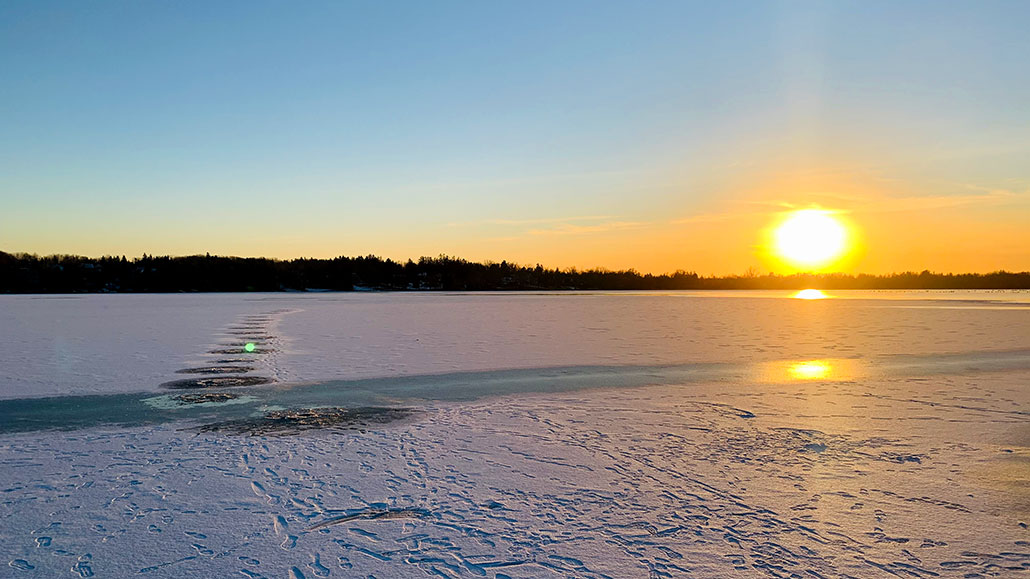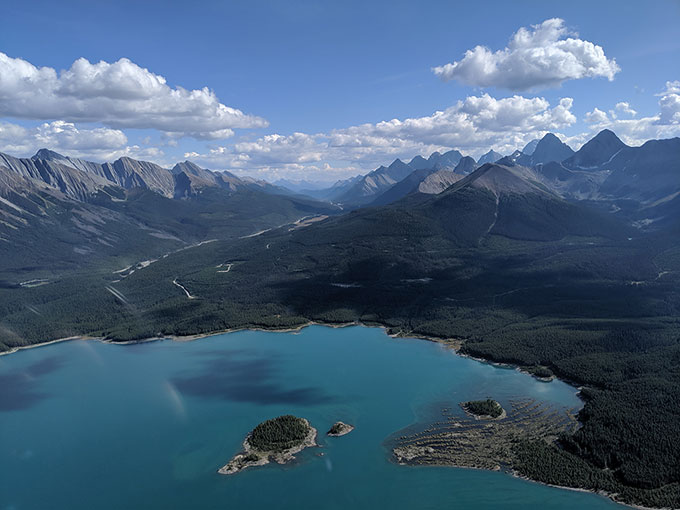Changing climate now threatens northern lakes year round
Warming temps are causing lake ice to disappear and heatwaves to grow more intense

One of the study authors snapped this picture of a lake near Toronto. If climate warming continues at current rates, this lake’s winter blanket of snow and ice may become a thing of the past, her team’s analysis suggests.
Sapna Sharma/York University
Share this:
- Share via email (Opens in new window) Email
- Click to share on Facebook (Opens in new window) Facebook
- Click to share on X (Opens in new window) X
- Click to share on Pinterest (Opens in new window) Pinterest
- Click to share on Reddit (Opens in new window) Reddit
- Share to Google Classroom (Opens in new window) Google Classroom
- Click to print (Opens in new window) Print
Each winter, an army of ice fishermen move onto frozen lakes. After drilling a hole through the ice, they’ll bait a hook and drop it into the frigid water. All hope to land a tasty dinner. But within just a decade, many dozens of northern lakes could be ice-free all winter long. That number could jump to thousands within the 70 years after that. And if that happens, ice fishermen will be the least of those affected.
A January study in Geophysical Research Letters predicts this spreading loss of lake ice. A second new study probes how extended heatwaves may affect lakes and their dwellers. As climate change worsens, some lake fish may not survive, the studies warn. Toxic algae blooms will develop more often. Weather patterns will change. Even the supply of fresh drinking water is likely to suffer.
Together, global data from these studies paint a grim portrait for fragile lake ecosystems.
“Lake ice does a lot of things — some that we do know, some that we don’t,” says Alessandro Filazzola in Toronto, Canada. There, he is part of a team of biologists at York University who teamed up with a water-cycle specialist in Germany. Together, they tracked the history of ice cover on northern lakes across the planet.
They combed through thousands of records that show when northern lakes have been freezing and thawing. Some date as far back as the 1400s, including some logged by Shinto priests in Japan. The scientists studied 1.35 million lakes in all. They poured their data into a computer along with local air temperatures from the same years as the lake records had been made.
The computer found a disturbing trend linking warm winter temps to an earlier than normal disappearance of ice on large lakes.
The scientists then went one step further. They turned to computer models of climate to see what temperatures these might predict for the lakes they studied in the coming decades. The researchers wanted to see when it might get too warm for these lakes to freeze at all.
The results were jaw-dropping.
Within the next 10 years, 179 lakes will permanently lose ice cover, those data predict. That number skyrockets to 5,679 by the end of the century. Among the most at-risk lakes are some of the largest and deepest in the world.

Things get worse in summer
Like a protective cocoon, lake ice shields the water from the sun and wind. This cuts its evaporation for months of the year. Winter ice also helps moderate summer lake temps by starting the season with cooler water. Things then worsen in summer. Evaporation escalates. That can reduce the supply of freshwater available for drinking. And when lakes warm too much, entire ecosystems become stressed.
At sea and on land, many species respond to warming environments by moving to cooler ones, says R. lestyn Woolway. He’s a scientist at the European Space Agency’s climate office in Didcot, England. In lakes, he notes, “the only refuge is to move to deeper, cooler waters,” he says. “However, deeper waters are often oxygen poor.” Soon, he worries, lakes may warm to where “there is nowhere for the fish to go.”
To find out when this is likely to occur, his team used a computer to model the likely impact of summer heat on 702 lakes throughout a 200-year span, starting in 1901. The average temperature of lake heatwaves (periods of extremely warm lake-surface temperatures) will increase about 3.7 to 5.4 degrees Celsius (6.7 to 9.7 degrees Fahrenheit). These heat spells will last longer and become more intense as Earth’s fever rises. On average, the model predicted, such lake heatwaves will last more than three months by 2099. In 1901, the average had been only one week.
That may make the water more comfortable for people to swim in, but many fish and other creatures won’t like it. As surface water temperatures rise, the number of species will decrease substantially, Woolway says. Weather patterns also will change as lake-evaporation rates rise. That will lead “to increased rainfall in some regions and an alteration of local air temperature in others,” he adds.
He and his teammates shared their findings in the January 16 Nature.
What this means
Cutting emissions of carbon dioxide (CO2) would help, the York study finds. Moderate to large cuts could “reduce the number of lakes that would become permanently ice free from 5,000-plus to less than 300,” Filazzola says. “That is a huge difference.” But if CO2 emissions continue at the current rate, his team showed last year, lakes could become “another victim of climate change.”
Gretchen Hansen agrees. She’s a fisheries ecologist at the University of Minnesota in St. Paul. Cutting CO2 releases is essential to protecting lakes, she says. Hansen did not participate in either study. She does, however, point out that each study is important in understanding how warming lakes are likely to affect fish and other life.
“We should be working to cut CO2 emissions to protect lakes … fish communities, drinking water, public health, human life and society as we know it,” she says. To achieve that, she argues, “We should be doing everything we can to move towards 100 percent green energy and a [CO2-free] economy within the next decade.”






